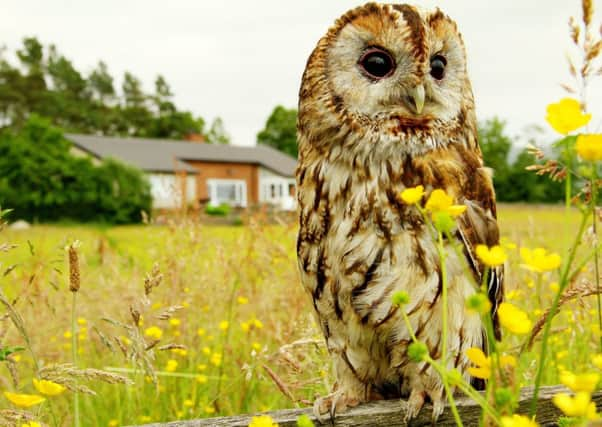Birdwatch: The Tawny Owl


Tawny owls become more vocal again while this year’s young, who stayed with their parents for a while after fledging must now disperse to find their own territories to occupy.
A good territory with plenty of birds and rodents to feed on is hard to find and many young owls that have failed in this mission die of starvation later in the autumn.
Advertisement
Hide AdAdvertisement
Hide AdThere is much competition with older males which make the familiar long tremulous hootings to establish ownership, sometimes engaging in some fierce fights. The female will sometimes hoot as well but her normal call is a sharp kewick.
The twit-tu-woo call associated with tawny owls are most likely not a single call but a combination of those made by the male and female.
Tawny owls are most vocal between 9pm-10pm on still, overcast nights and call less when it is wet and windy or on moonlit nights when they’re hunting more than calling.
Once a territory has been won and the male has paired up, the two will stay together in the same area for life. A nest is built usually in the hole in a mature tree although a pair might take over a large magpie nest and will readily use an owl box.
Advertisement
Hide AdAdvertisement
Hide AdThey are most frequently found in deciduous trees and as well as the countryside will also inhabit urban parks, churchyards and some large gardens.
Young barn owls are also dispersing now while the parents may well have already started rearing a second brood in what has been one of the best breeding seasons for them for years. They started breeding earlier than usual thanks to the mild spring and have had larger broods than usual.
By now these youngsters will have learned to hunt and by 11 weeks made their first kill. Once that’s happened the parents reduce the amount of food they supply to their brood and any owlet that remains after 14 weeks is chased away.
Hopefully, more of this year’s young barn owls will survive the winter to continue this recovery.
Advertisement
Hide AdAdvertisement
Hide AdYoung little owls also face a struggle to find their own territories and various studies have shown that the period after fledging is a critical one for them.
A little owl chick fledges after five weeks and, like other owls, the parents continue to feed it for a month while it learns to catch worms and feed itself.
Once it can support itself it moves off to find its own territory and if it fails to do so by next month its chances of survival are much reduced.
This high mortality rate among young little owls is one reason why numbers have been falling across Europe since the 1960s. Other contributory factors include a lack of nest sites in tree hollows, old walls and barns, prolonged cold weather in some winters and a lack of larger invertebrates for them to feed on because of agricultural insecticides.